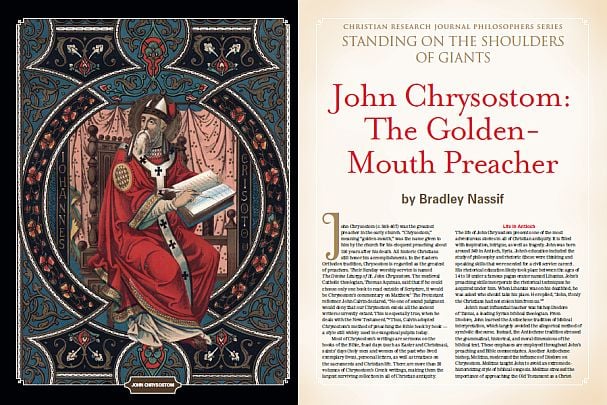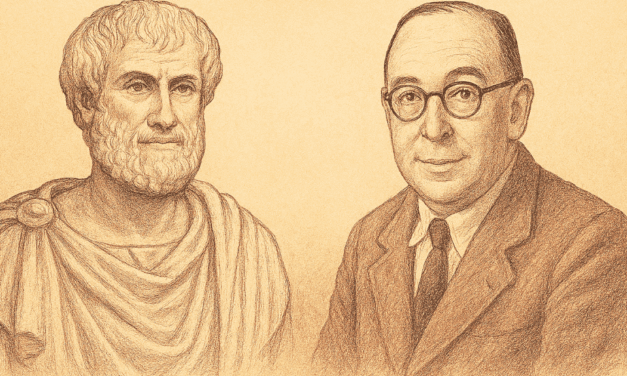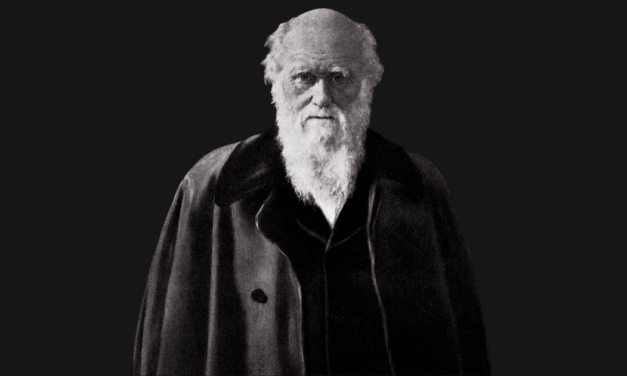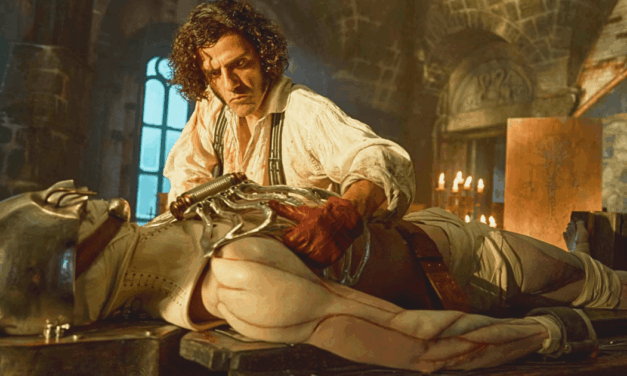Listen to this article (12:10)
This article first appeared in the Christian Research Journal, volume 42, number 3/4 (2019). For further information about the Christian Research Journal please click here.
John Chrysostom (c. 349–407) was the greatest preacher in the early church. “Chrysostom,” meaning “golden-mouth,” was the name given to him by the church for his eloquent preaching about 150 years after his death. All historic Christians still honor his accomplishments. In the Eastern Orthodox tradition, Chrysostom is regarded as the greatest of preachers. Their Sunday worship service is named The Divine Liturgy of St. John Chrysostom. The medieval Catholic theologian, Thomas Aquinas, said that if he could choose only one book to read outside of Scripture, it would be Chrysostom’s commentary on Matthew.1 The Protestant reformer John Calvin declared, “No one of sound judgment would deny that our Chrysostom excels all the ancient writers currently extant. This is especially true, when he deals with the New Testament.”2 Thus, Calvin adopted Chrysostom’s method of preaching the Bible book by book –– a style still widely used in evangelical pulpits today.
Most of Chrysostom’s writings are sermons on the books of the Bible, feast days (such as Easter and Christmas), saints’ days (holy men and women of the past who lived exemplary lives), personal letters, as well as treatises on the sacraments and Christian life. There are more than 20 volumes of Chrysostom’s Greek writings, making them the largest surviving collection in all of Christian antiquity.
Life in Antioch
The life of John Chrysostom presents one of the most adventurous stories in all of Christian antiquity. It is filled with inspiration, intrigue, as well as tragedy. John was born around 349 in Antioch, Syria. John’s education included the study of philosophy and rhetoric (these were thinking and speaking skills that were needed for a civil service career). His rhetorical education likely took place between the ages of 14 to 18 under a famous pagan orator named Libanius. John’s preaching skills incorporate the rhetorical techniques he acquired under him. When Libanius was on his deathbed, he was asked who should take his place. He replied, “John, if only the Christians had not stolen him from us.”3
John’s most influential teacher was bishop Diodore of Tarsus, a leading Syrian biblical theologian. From Diodore, John learned the Antiochene tradition of biblical interpretation, which largely avoided the allegorical method of symbolic discourse. Instead, the Antiochene tradition stressed the grammatical, historical, and moral dimensions of the biblical text. These emphases are employed throughout John’s preaching and Bible commentaries. Another Antiochene bishop, Melitius, moderated the influence of Diodore on Chrysostom. Melitius taught John to avoid an extreme de-historicizing style of biblical exegesis. Melitius stressed the importance of approaching the Old Testament as a Christ-centered book, and not primarily as a historical record of the past. Thus, Chrysostom combined historical and Christological exegesis through “theoria” (the higher spiritual sense of the text that is founded on its literal meaning).4
John adopted a strict ascetical life of self-denial, prayer, and fasting. He became a hermit and took up a solitary life for four years in a nearby cave in the mountains. He spent two years denying himself sleep as he memorized the entire New Testament by heart. Later, John regretted the severe physical hardships he imposed on himself. They permanently injured his health, resulting in chronic insomnia, abdominal problems, and sensitivity to cold. Although he defended the monastic way of life, in 381 John abandoned it and returned to Antioch where he was later ordained a presbyter.
Most of Chrysostom’s famous sermons were delivered in Antioch between 386–398. These and other sermons are a gold mine of information about political, social, economic, and everyday life in Antioch and Constantinople. They have become a treasure chest for modern historians, theologians, archaeologists, and linguists alike. We can better appreciate their moral and spiritual concerns by understanding the social context in which he preached.
Antioch had between 300–500 thousand inhabitants, both pagan and Christian. Emperors had endowed it with elegant architecture, a library, law courts, a palace, public baths and even lighted streets. Christians comprised about a third of the population and had two main churches. Chrysostom’s sermons reveal a Christian community that was largely nominal and worldly. Many Christians were in the habit of attending the local theatre and circus where immoral acts and bloody gladiatorial games took place. There were also a number of heretical Christian sects, such as Arians (who denied the full divinity of Christ), Apollinarians (who denied Christ’s full humanity), and others. A significant number of Jews also lived in Antioch and had great social and religious influence on the Christian community.
Chrysostom’s ninety Homilies (Sermons) on Matthew are the oldest and most complete of the early church. Nearly all the sermons are simple and practical. Here John is pastorally sensitive, yet unafraid to confront the sins of greed, pride, lust, and other vices. He offers compassionate cures for the weak and feeble of his flock. He believed every word and syllable of the Old and New Testaments are divinely inspired. Thus the Bible may be relied on for its “accuracy and precision” (akribeia).5 God spoke to humans through human language and progressively “accommodated” (synkatabasis) Himself and the plan of salvation (oikonomia) to the level of comprehension that the people were capable of receiving at that time.
Another of John’s best-known works is his book on Christian ministry titled, On the Priesthood. This is the first treatise on Christian ministry ever written. One of his ancient biographers tells us:
No one has read this volume without feeling his heart inflamed with the love of God. It sets forth how venerable and how difficult is the office of the priesthood, and it shows how to fulfill it as it ought to be fulfilled. For John, bishop of Byzantium [Constantinople], that wise interpreter of the divine mysteries, the light of the whole Church, composed that work with so much skill and accuracy, that they who fulfill the priestly office as God desires, and they who fulfill it with negligence, find in it their virtues and faults portrayed.6
In 386–387 Chrysostom delivered eight Homilies Against the Jews in which he attempted to demonstrate the superiority of Christianity over Judaism. The sermons were prompted by Christians who were attending Jewish synagogues, practicing Jewish fasts and celebrating Jewish ceremonies. Their attraction to Judaism came more from ignorance and superstition than religious faith. Like the book of Hebrews, John argued that Christianity was the fulfillment of all these Old Testament practices. The institutions of Judaism were obsolete now that the Messiah had come and fulfilled the demands of the Law and the prophets. At times, the sermons sound emotionally violent and anti-Semitic. While it is true that John had strong feelings about Jewish unbelief, in other contexts he was no less sparing in his criticism of false prophets who were morally corrupt. Jewish people, false prophets, and heretics alike were people who should have recognized Jesus as the Messiah. Still, John praised Jewish people for exemplifying diligent obedience to the Law, unlike lazy Christians who hardly practiced their faith.7
In 387 the people of Antioch rioted in protest against taxes imposed on them by the emperor. Mob fights broke out on the streets destroying several statues of the emperor. This was a serious crime of treason. Great fear spread throughout the city as people were terrified the emperor would send troops to burn down the town. John came to the rescue by delivering a series of impassioned appeals for clemency. The sermons have been preserved as his Homilies on the Statues. Their rhetorical skill, fiery passion, and elegance caught the attention of the imperial court at Constantinople. In 398, John’s life would be forever changed when he was chosen by emperor Arcadius to become the archbishop of the capital. Under imperial pressure, John was kidnapped and taken to the capital to become the Patriarch of Constantinople.
Life in Constantinople
The last nine years of Chrysostom’s life became the most difficult of all. Tragically, he became embroiled in heated controversies with imperial and church officials that would eventually lead to his exile and death in 407.8
By temperament, Chrysostom was a man out of step with his times. Life as the head bishop of the capital of the Roman empire was very different from Antioch. When he arrived at his ornate palace in Constantinople, he immediately tried to reform worldly clergy who had been cohabitating with women. John needed diplomatic skills and the ability to adapt and compromise, which he did not have. His moral convictions evoked the hostility of fellow clergymen and court officials, including empress Eudoxia who would eventually become the nemesis of his demise.
Toward the end of John’s life, the empress Eudoxia was offended by him and went on the attack. John’s unwillingness to compromise Scripture, his contempt for the wealthy lifestyle of the court, his tendency to separate himself from others, and his fearless speech became his undoing. At one point, the empress erected a silver statue of herself near the church where Chrysostom served. This became an occasion for him to make disparaging comments in a sermon about the vanity of pagan lifestyles. Eudoxia took offense. When John got wind of this, he preached a sermon reminiscent of his namesake, John the Baptist: “Again, Herodias rages! Again she dances! Again she seeks the head of John!”
That and other allegations became the occasion for John’s trial at a place called the “Oak” in 403. An Alexandrian bishop, Theophilus, stacked the deck against him with bishops who became John’s judges and accusers. They condemned John on a series of concocted charges including defamatory and treasonable words against the empress. John was declared guilty and sent into exile. In the midst of these theatrical events, a violent earthquake shook the capital causing protest riots by the people to get John back. He soon returned, but new tensions broke out with the empress that resulted in his final exile. Under Roman soldiers, John was marched to a slow death for over 400 miles on foot to a village on the Black Sea. On the way, he wrote a consoling treatise to his dear friend, Olympia, a female deaconess who was riddled with anxiety over John’s fate. The treatise is titled, No One Can Harm the Man Who Does Not Injure Himself. John never made it to his final destination. His dying words were, “Glory be to God for all things!”
Today’s Christian apologists may wish to study Chrysostom’s work in at least four areas. First, Chrysostom exemplifies the enduring principle that theology must always be biblical because Scripture is the primary source of Christian truth. Second, Chrysostom’s Antiochene methods of biblical interpretation are a model for today’s “theological interpretation of Scripture.” The grand narrative of “salvation history” guides the interpreter’s search for historical details and also deeper spiritual truths. Third, Chrysostom combined both reason and godliness in his apologetic work. Like “the golden-mouth” preacher he was, today’s ministers may profitably learn rhetorical and philosophical skills from pagan teachers. Godliness, however, beautifies the truth and makes it winsome to outsiders. Finally, Chrysostom exemplifies moral courage for today’s culture warriors. He spoke truth to those in power even though it eventually cost him his life.
Bradley Nassif, PhD, is Professor of Biblical and Theological Studies at North Park University.
NOTES
- “Aquinas on Chrysostom’s Homilies on Matthew,” Liber Locorum Communium, June 4, 2014, https://liberlocorumcommunium.blogspot.com/2014/06/aquinas-on-chrysostomshomilies-on.html.
- John Calvin, Praefatio in Chrysostomi Homilias, CO 9:834, as quoted in Jeannette Kreijkes-van Esch, “Sola Scriptura and Calvin’s Appeal to Chrysostom’s Exegesis,” in Sola Scriptura: Biblical and Theological Perspectives on Scripture, Authority, and Hermeneutics, eds. Hans Burger, et al. (Leiden: Brill, 2017), https://doi.org/10.1163/9789004356436_016.
- Quoted in Philip Schaff, “Prolegomena: The Life and Works of St. John Chrysostom,” Nicene and Post-Nicene Fathers, IX, ed. Philip Schaff (New York: Scribners, 1903), 6.
- Bradley Nassif, “Antiochene ‘Theoria’ in John Chrysostom’s Exegesis” in Exegesis and Hermeneutics in the Churches of the East, ed. Vahan S. Hovhanessian (New York: Peter Lang, 2009), 51–66; Bradley Nassif, “Spiritual Exegesis in the School of Antioch,” in New Perspectives on Historical Theology: Essays in Memory of John Meyendorff, ed. Bradley Nassif (Grand Rapids: Eerdmans, 1996).
- For a fuller exposition of Chrysostom’s doctrine of Scripture, see Bradley Nassif, “John Chrysostom on the Nature of Revelation and the Task of Exegesis,” in What is the Bible? The Patristic Doctrine of Scripture, eds. Matthew Baker and Mark Mourachian (Minneapolis: Fortress Press, 2016), 49–66.
- Isidore of Pelusium, quoted in Johannes Quasten, Patrology, Vol. III (Westminster, MD: Christian Classics, 1983), 459.
- An extensive study of Chrysostom’s alleged anti-Semitism is Robert L. Wilken, John Chrysostom and the Jews: Rhetoric and Reality (Berkeley: University of California Press, 1983).
- An historically reliable biography that is also enjoyable to read is J. N. D. Kelly, Golden Mouth: The Story of John Chrysostom (Grand Rapids: Baker Books, 1995).









